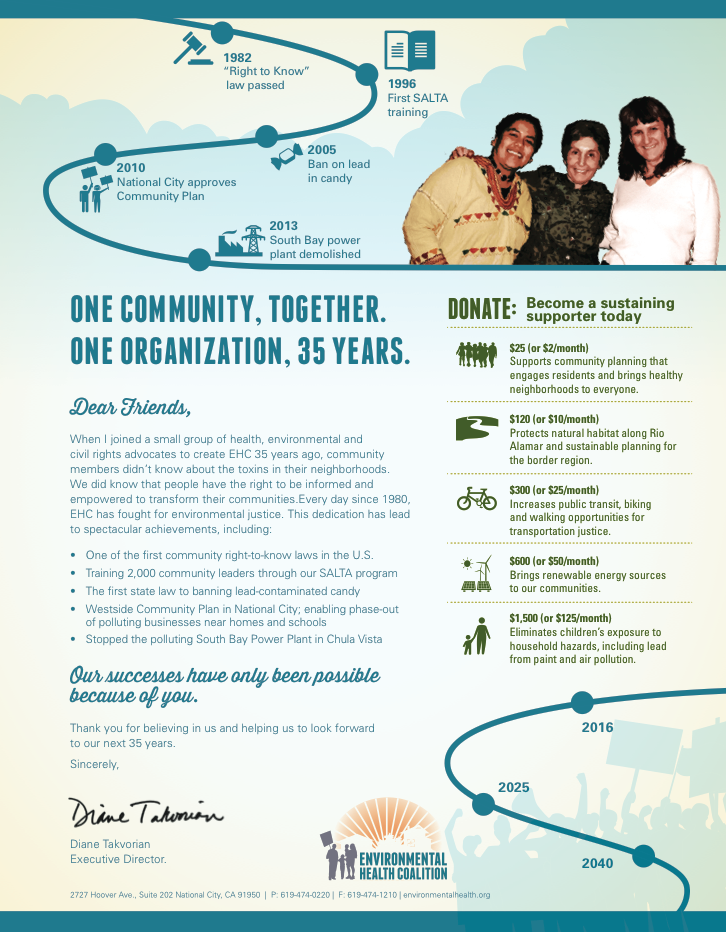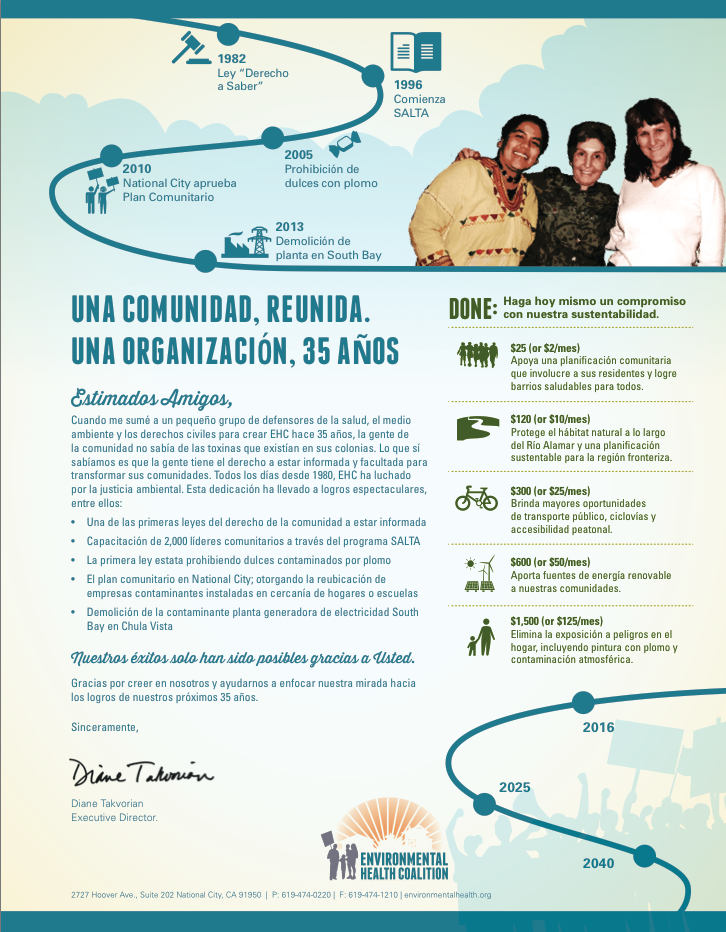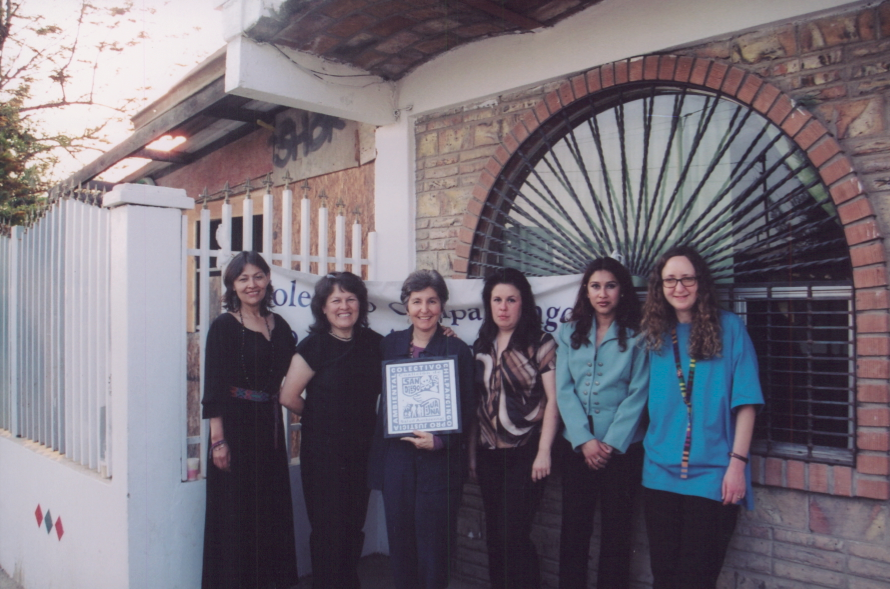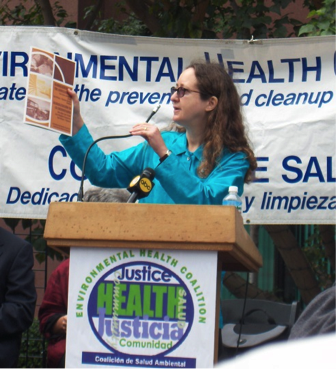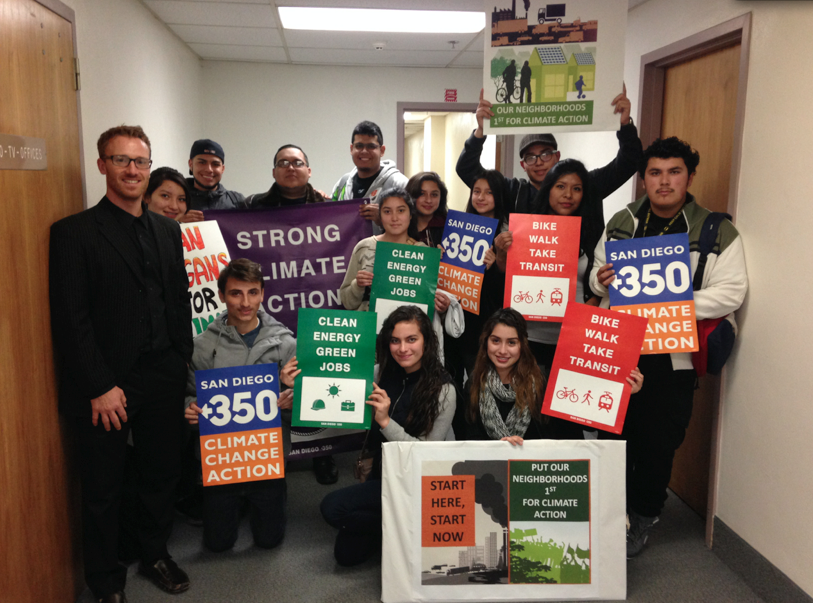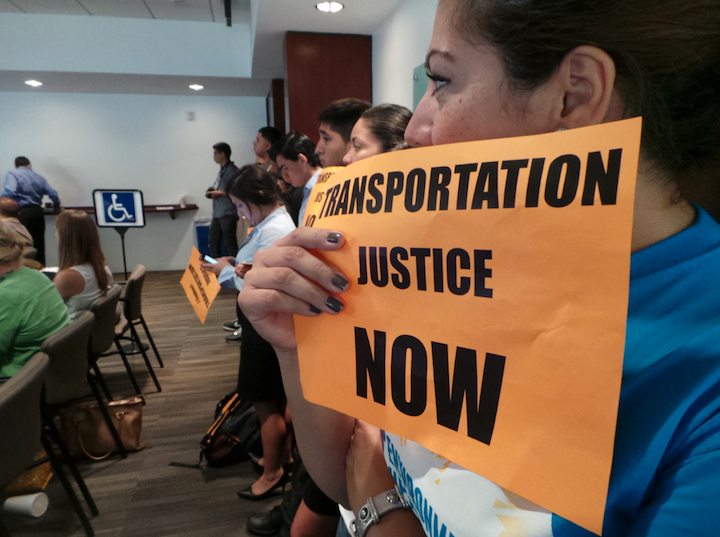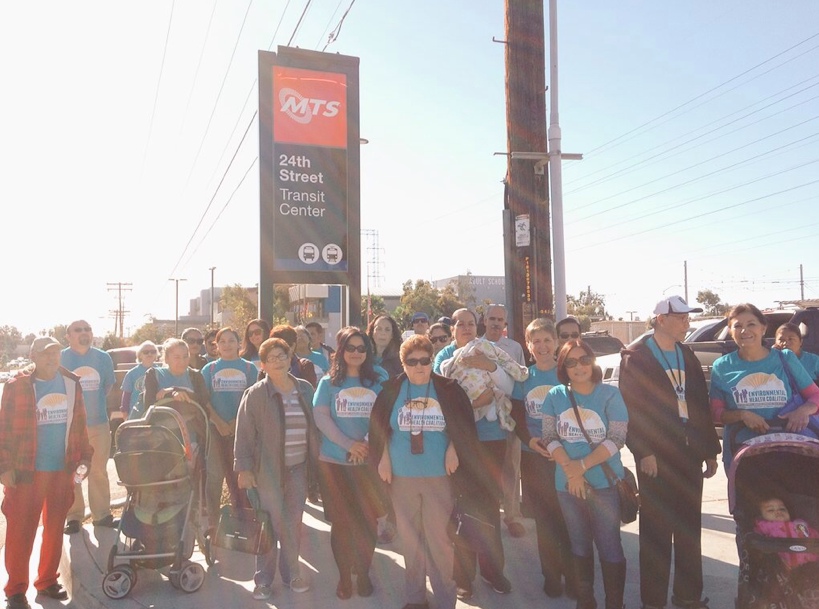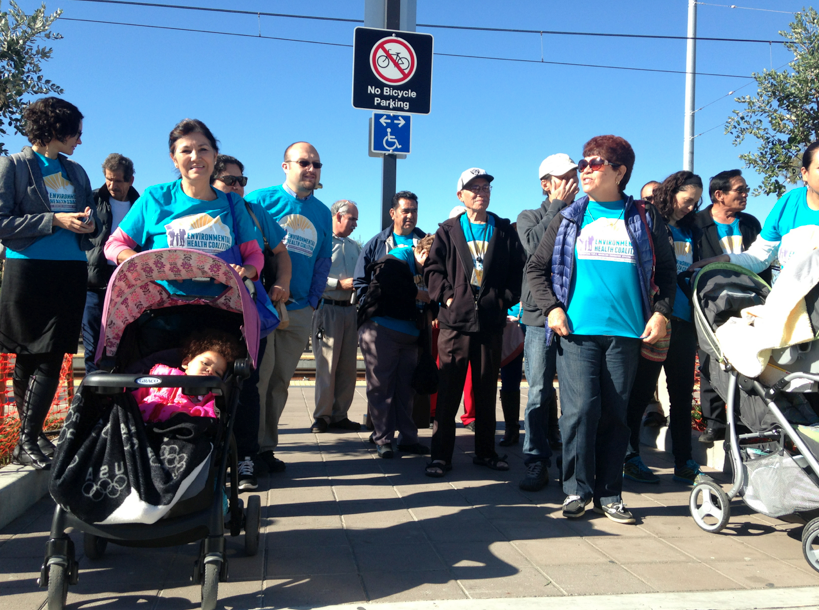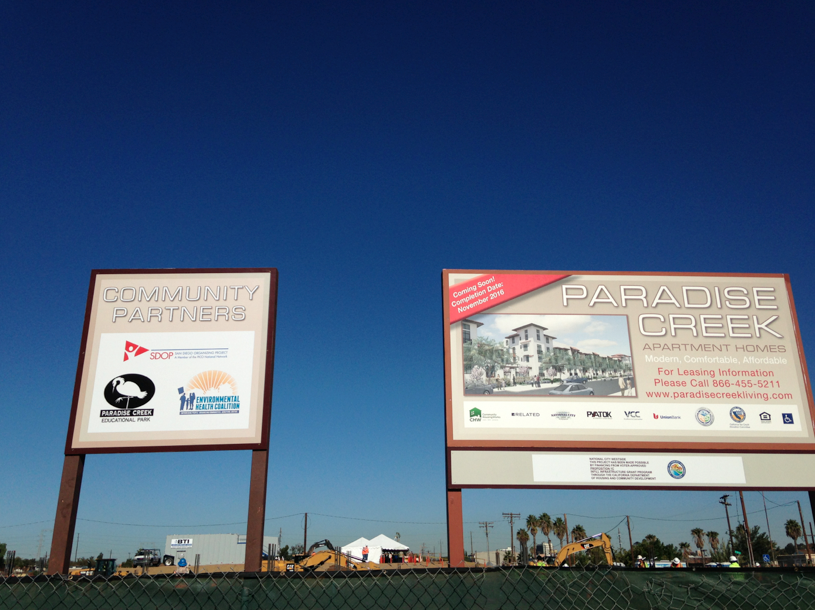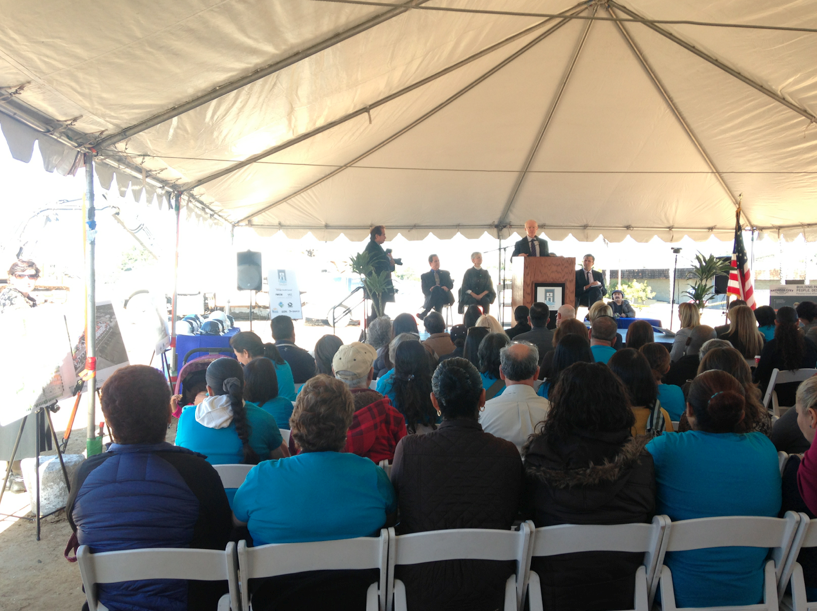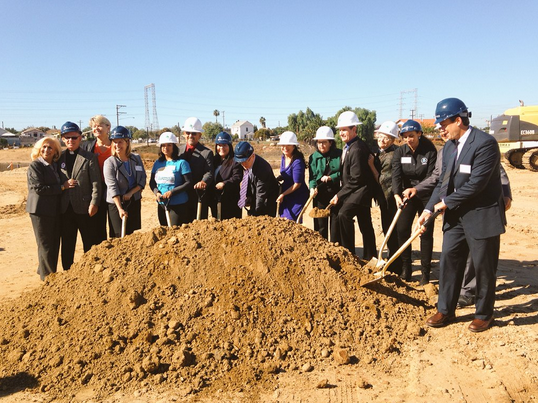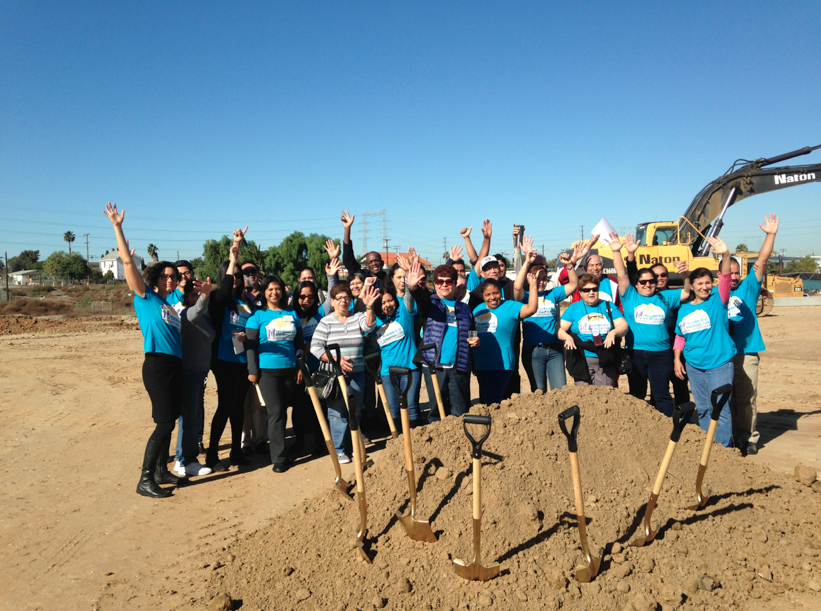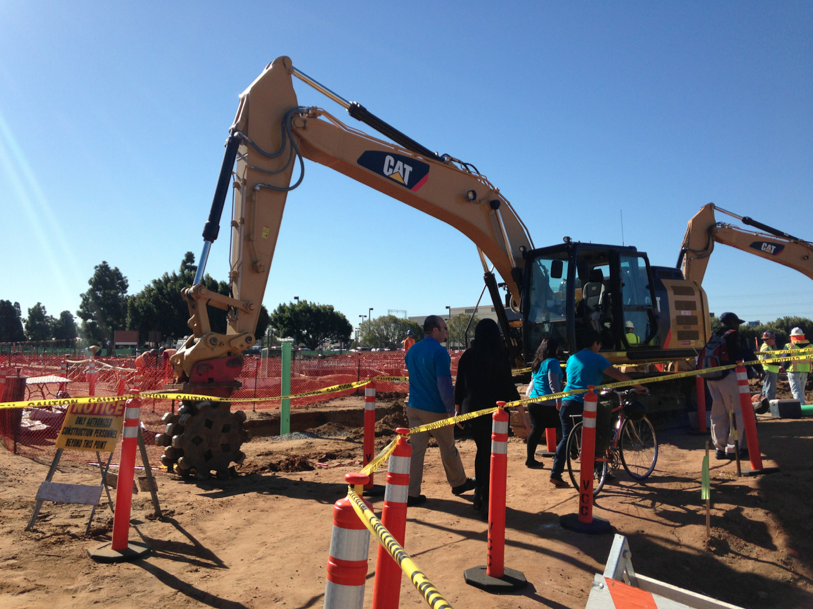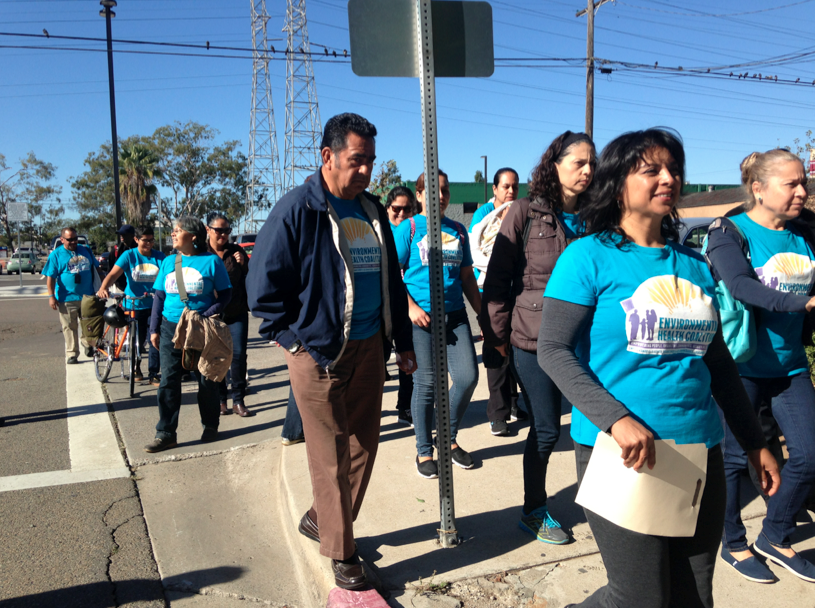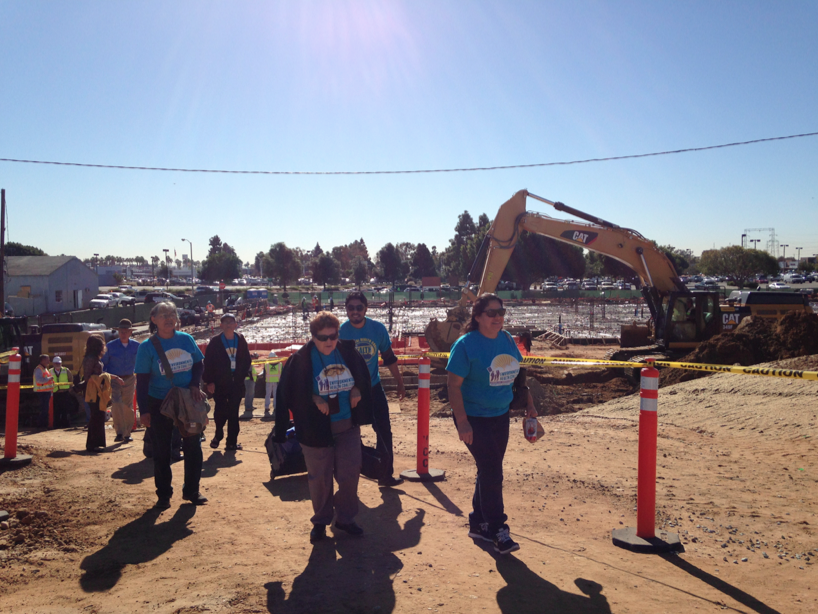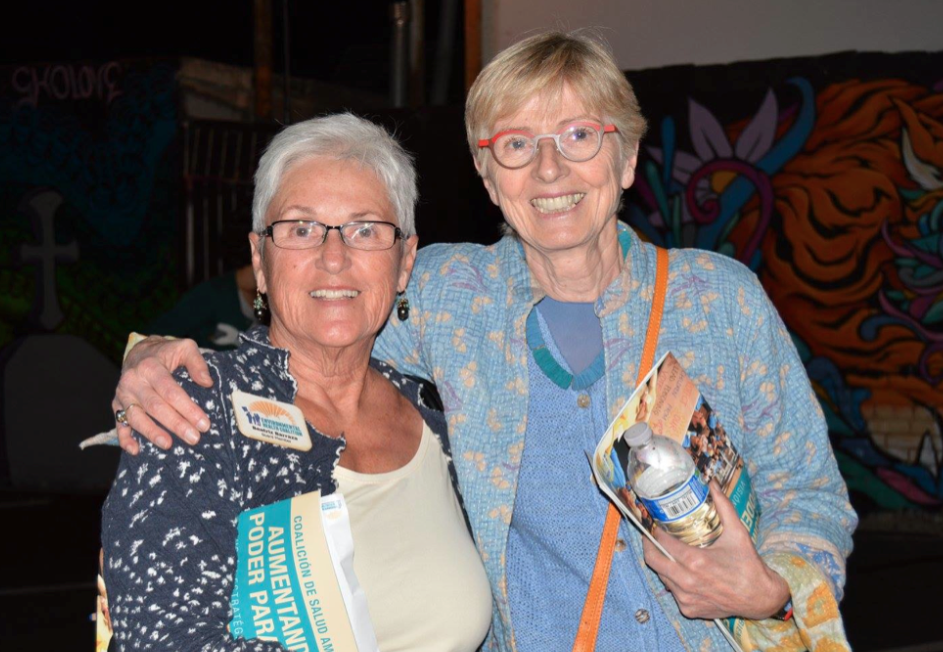
Beatriz Barraza has been with EHC for nearly 30 of its 35 years. She is currently serving as chair of the fund development committee. We asked Bea about her time at EHC. This is what she had to say.
Describe EHC when you began.
I began working with EHC in 1987, after I met Diane in my fitness class. I brought a petition to stop the Navy Development in Florida Canyon that was going on at the time, which got Diane and I talking about my dedication and deep-rooted passion for public health issues. When she told me about what EHC was doing to help local, low-income communities, we clicked instantly. I have since been an active long-time supporter and board member.
Why did you choose to be part of EHC?
EHC fights for social and environmental justice. I was inspired by EHC’s work in communities exposed to pollution and chronic illness like asthma, heart problems, skin diseases and many other preventable illnesses.
What excites you most about being involved with EHC?
The most exciting thing is our companionship with and dedication to the Latino and southern San Diego communities. EHC works hard for the communities that need environmental justice most - such as National City, City Heights, Barrio Logan and Tijuana - and then reaches out to work with the community directly.
Share a milestone that stands out to you.
Wow. There are many inspirational milestones and achievements to mention, but the one that most of us can relate to is the first SALTA graduation. It was such a tremendous victory to see the promotora model in action. I was so glad to have had a role in developing it. And now, nearly 20 years later, over 2,000 residents have graduated. It’s truly astonishing.
To donate to EHC today, please click here.
To learn more about Bea, click here.


